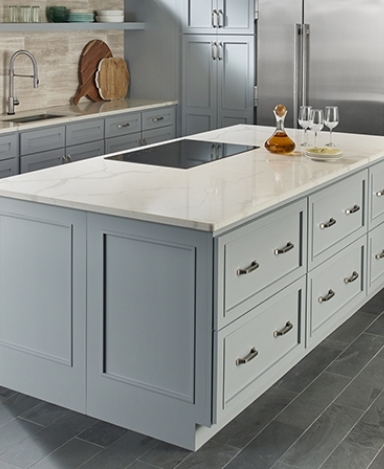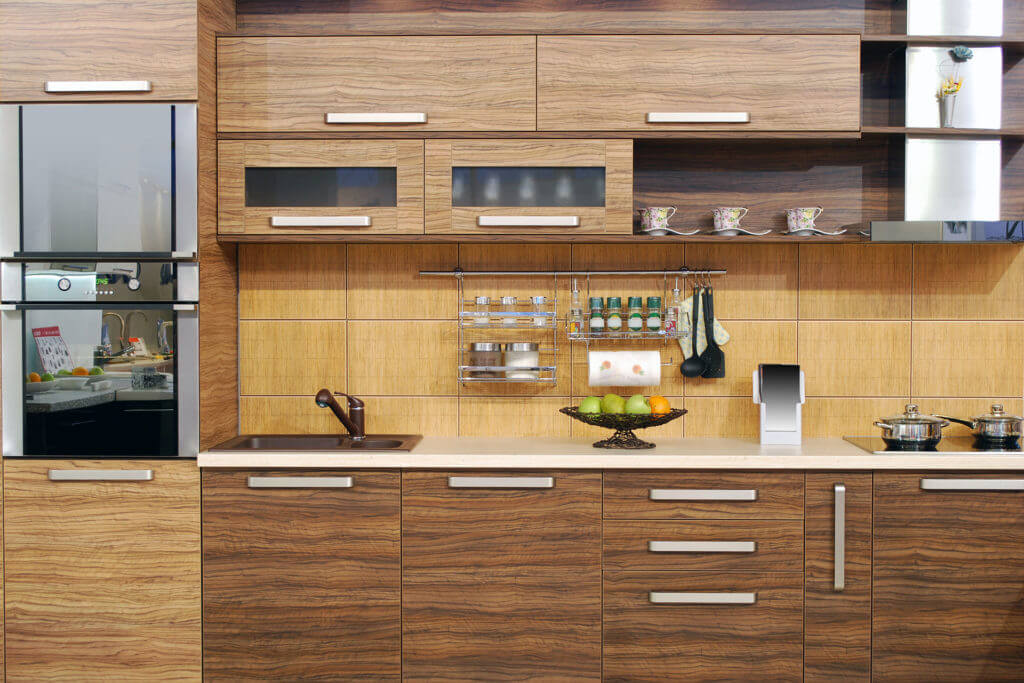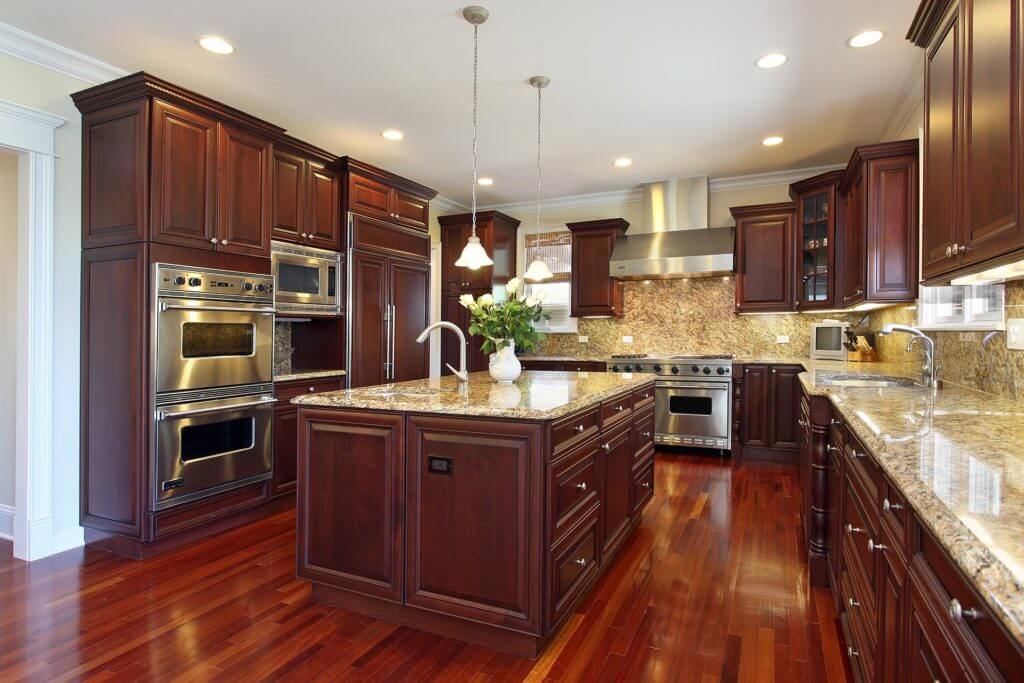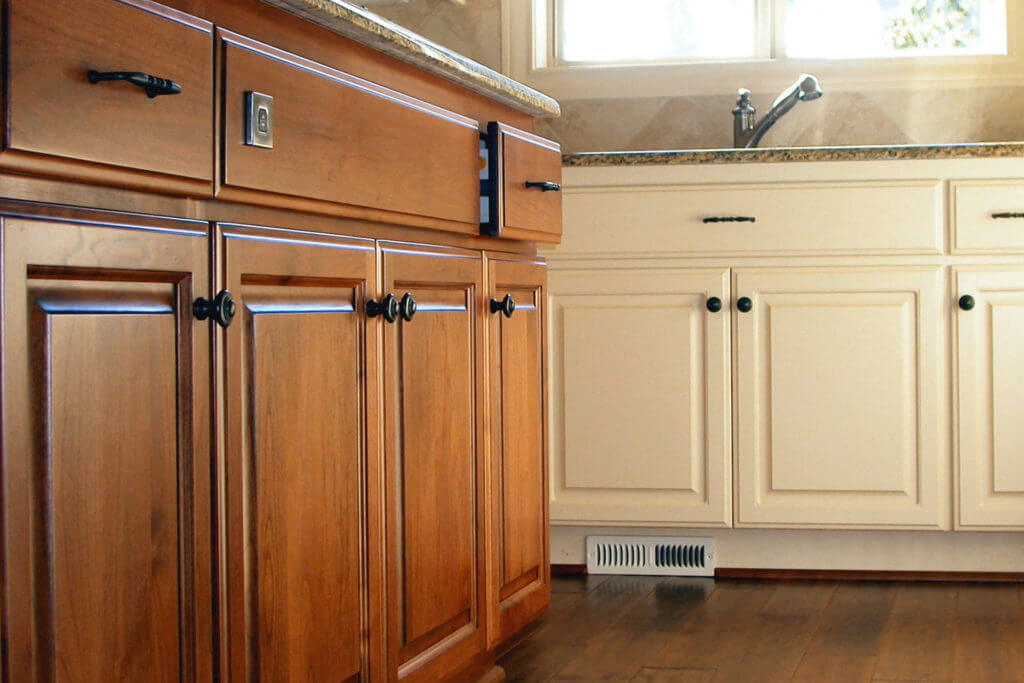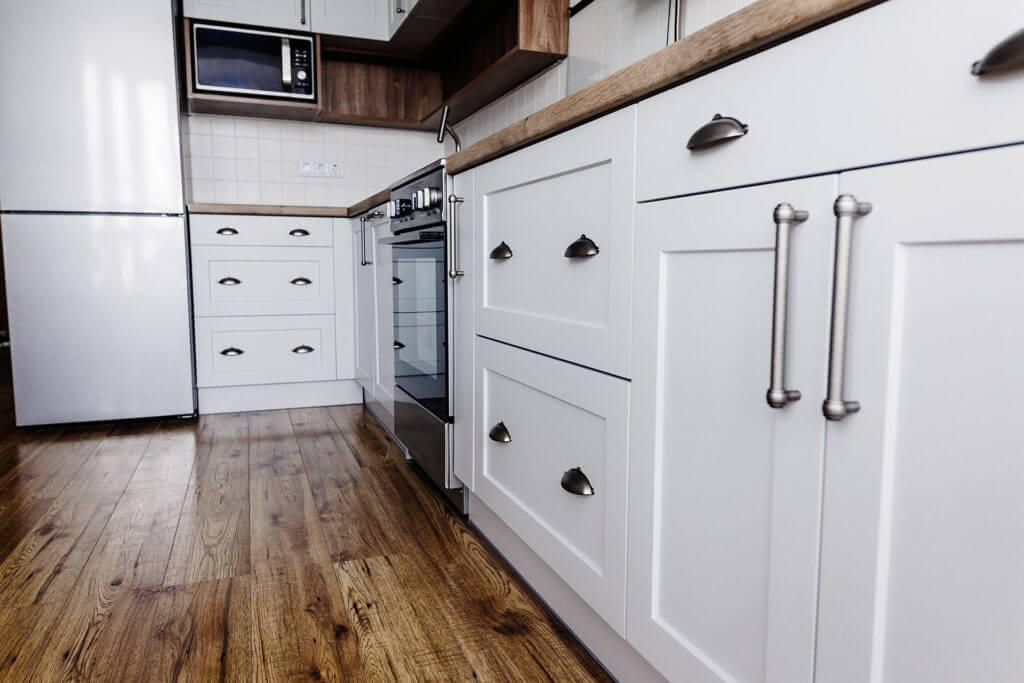
How to care for your refaced cabinets
Whether in a kitchen, bathroom, or other room, refaced cabinets can transform the inside of your home. After getting your cabinets refaced, you’ll want to take the best possible care of them and preserve their new look.
You’re going to be using your cabinets almost all the time, and there are many things that could potentially stain or otherwise damage them. You’ll need to be careful about what you’re using to clean your cabinets, because it’s possible to ruin the finish or paint. But if you follow our tips, you can keep refaced cabinets looking just like new for years to come!
Dealing with food stains and grease spots on your kitchen cabinets requires a gentle touch.
At Express Reface, our refacing process involves applying commercial grade furniture paint to the existing cabinet frames, as well as to new doors and drawers. This can offer some resistance to water, food, and grease stains, but this protection is not absolute.
When a spill happens, or a splash of sauce or grease gets onto your new cabinet surfaces, it’s important to try and clean it right away. If you wait too long, the stain will set, and at that point you may need to use chemical cleaners that could potentially damage the finish or paint.
Here are a few recommended ways to clean fresh stains.
Warm water and sponge
If the stain or spill is fresh, you might not need to use cleaning solutions. A combination of warm water and a sponge can be enough to wipe away grease spots, food, or sauces that have splashed onto the cabinet. If a simple wipe down isn’t enough, you can use a softer scrubbing pad (such as those found on the backs of sponges) to try and loosen the material stuck to the cabinet. Higher temperature water might also help.
Don’t use a dripping wet sponge on the cabinet! This isn’t going to necessarily cause damage to the cabinet by itself, but it can spread the mess and necessitate more cleaning and drying. Wring out excess water from the sponge, not to the point where it’s dry, but so it does not spill water all over the place.
Always thoroughly dry a cabinet surface after you’ve finished cleaning up. Leaving a cabinet damp can cause water spots, and may cause damage to paint.
Dish soap and warm water
If a food stain or grease spot is particularly stubborn, a mixture of dish soap and hot water can break up the stain. Don’t use a large amount of soap—just enough to get some bubbles in the water. As with plain water, you don’t need to use a dripping, soapy wet sponge. With some scrubbing, the dish soap and water should remove stains and food residue.
Homemade cleaner
There are some homemade solutions for cleaning cabinets which can help you avoid the use of toxic and abrasive cleaning solutions found on store shelves. One of the best is a mixture of two parts of white vinegar to one part of water, which can be used to scrub off spills that may have dried before you got to cleaning them.
Alternatively, if the smell of white vinegar is just too much to deal with, you can use apple cider vinegar. This has many of the same qualities, including the acidity that can help break down foods or grease spots, without the same harsh smell. However, as apple cider vinegar is darker than white vinegar, this should be further diluted in water to avoid staining or dulling cabinet surfaces—a ratio of 1 cup of cider vinegar to 1 gallon of water is recommended.
In either case, apply this homemade solution to a clean cloth, wipe down the cabinets, then use a clean towel to dry off the surface. This can be used on a variety of surfaces, but care should be taken to avoid leaving it on the cabinets for an extended period of time, as this can stain or etch paint and finishes.
Chemicals and other cleaning products to avoid
There are plenty of cleaning products that you can buy from stores to clean your cabinets. Unfortunately, some of these can cause far more harm than good to your refaced cabinets by damaging paint, eating away at laminate surfaces, and even causing stains. Chemicals you should avoid at all cost include:
- Ammonia
- Bleach
- Paint thinners
- Nail polish remover
- Silicone and petroleum-based products
- Solvents
Be wary of any detergents or soaps that are described as “extra strength,” as these may contain chemicals that can damage your cabinets.
You should also avoid using plastic brushes, steel wool, and scoring pads. A stain might be particularly stubborn, and it’s tempting to take something coarse to it, but these items can cause damage worse than the initial stain. You might be able to repaint these surfaces, but deep scratches are harder to hide.
Don’t leave wet towels or clothes hanging onto your new cabinets.
Moisture is consistently one of the biggest threats for cabinets, which is why so much of our cleaning advice includes reminders to ensure cabinets are wiped completely dry. But a common mistake many homeowners make, even the careful ones, is to leave wet clothes or towels hanging from the cabinets.
Depending on the material used and the surface, this can result in serious damage, staining painted surfaces or even causing peeling and cracking.
Be careful about exposing cabinets to high heat or humidity.
Cooking appliances can be a potential source of damage. Smoke from burned food, heat from open flames, and the overall increase in temperature from using ovens or stove tops can cause damage to surfaces directly exposed to the heat. Even bumping a hot pot or pan against a cabinet can damage the paint, and even burn the material underneath.
Ovens are particularly egregious offenders, particularly those with self-cleaning features. An oven set to self-clean can reach temperatures that are far higher than what is used for regular cooking. If this heat escapes the oven, it can cause damage to nearby cabinets. If you are going to use the self-cleaning feature of your oven, one suggestion is to remove the cabinet doors directly adjacent to it, or open them away from the oven if possible.
Humidity is also a concern. If you’re a fan of hot showers or baths (and who could blame you), unfortunately you’re exposing bathroom cabinet surfaces to humidity. This is less of a problem in larger bathrooms, but in smaller spaces, moisture builds up in the air very quickly.
You can limit this by using the ventilation fan in your bathroom. Alternatively, you can leave the door open to allow air to flow through the bathroom. After a bath or shower, wipe off any moisture on the cabinets with a dry towel.
Try to avoid direct sunlight on your cabinets.
Sunlight can be warm and pleasant, and the design of your home may deliberately allow as much of it inside as possible. But constant and regular exposure to sunlight can cause damage to your cabinets over time. Paints and wood finishes can fade under direct sunlight, and it can also cause damage to laminate surfaces and thermofoil. The summer months can be especially harmful as temperatures rise.
To prevent this, set draperies over your windows to limit direct sunlight exposure. If you have blinds, keep them closed, and install blinds where possible. Some people like to drape dry towels over cabinet doors that are exposed to the sun. If you’re willing to DIY, you can mount towel racks or hangars to the cabinets, but this can be tricky to do without compromising their look.
Be careful opening (and closing) your cabinet doors and drawers.
Like any other part of your home, physical abuse can damage your cabinets. Slamming doors shut can chip or crack the finish and damage the cabinet boxes themselves. Door hinges can break. In the worst cases, you can potentially tear fasteners out of doors or cabinet boxes, which can be a challenge to repair. Also, ensure that utensils, pot handles and other items aren’t sticking out of cabinets or drawers when you close them, as this can cause serious damage.
If you have got very young children, you will definitely want to monitor them as much as possible. If you are still considering refacing options, you may want to ask your refacer what paint colors and finishes are most resistant to the consequences of inevitable childhood accidents and temper tantrums.
With the proper care, refaced cabinets can last for decades without requiring serious maintenance or replacement. And if you want to get the best cabinet refacing done, with the best processes and highest quality materials, call Express Reface today! Our work can stand the tests of time and family for as long as you live at your home.
Let's Talk!
Please send us your information and our team will get in touch with you right away to talk about your project.
